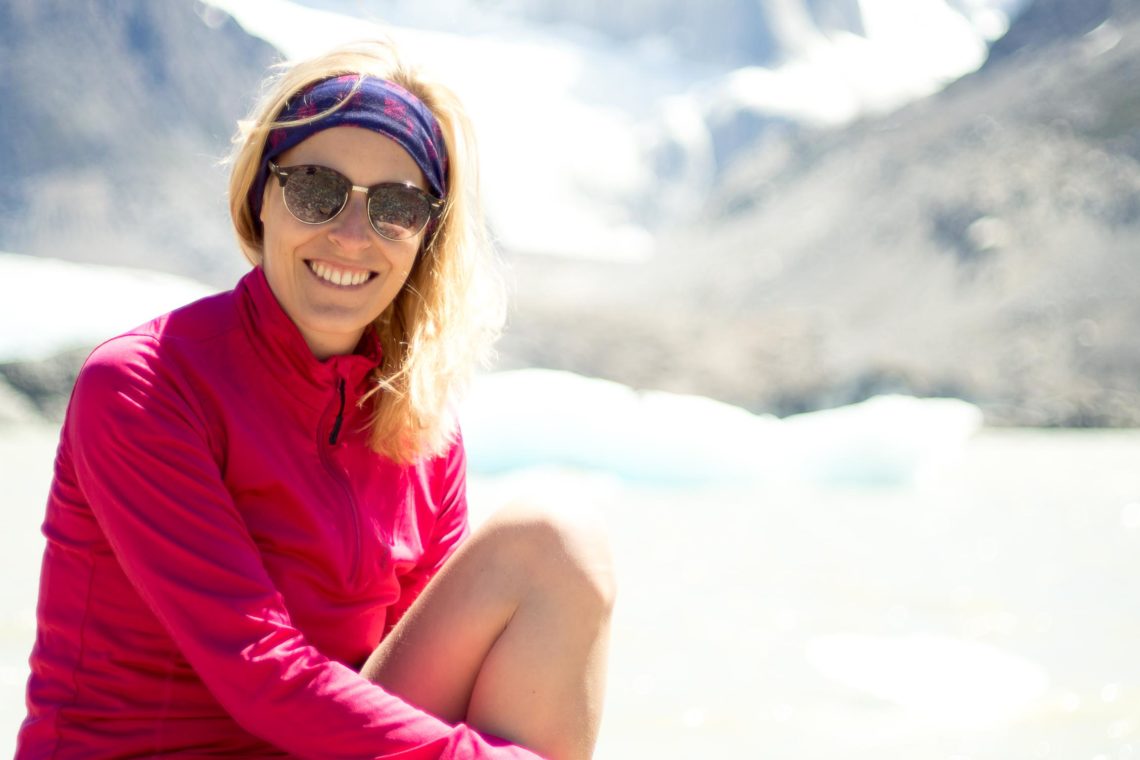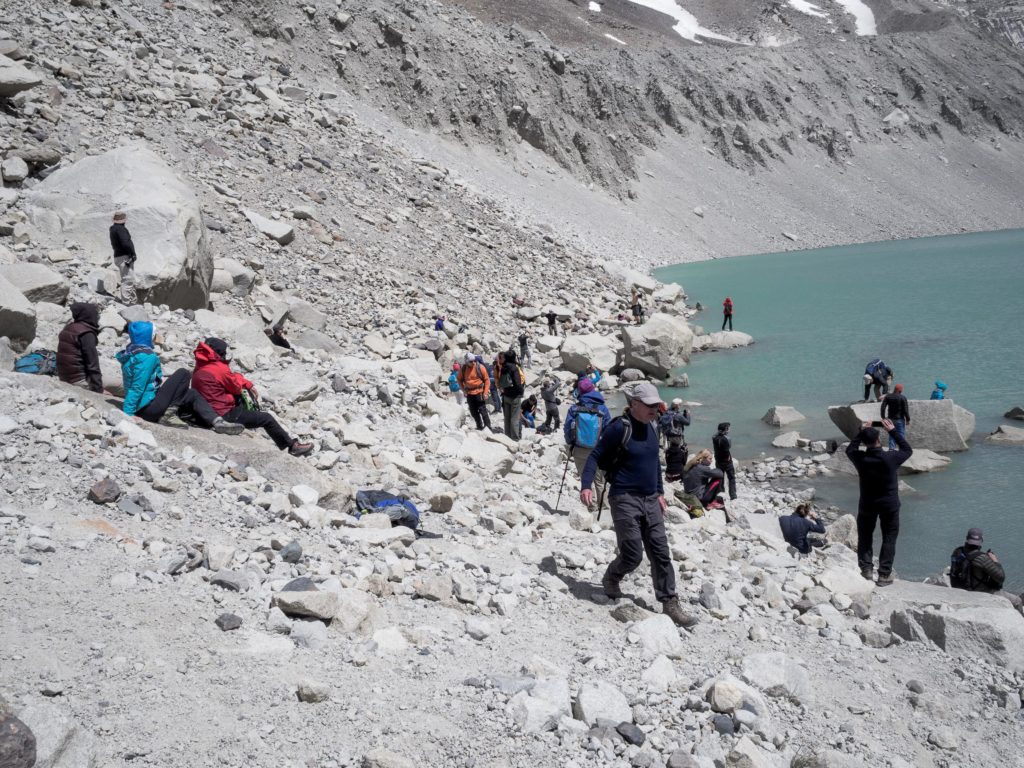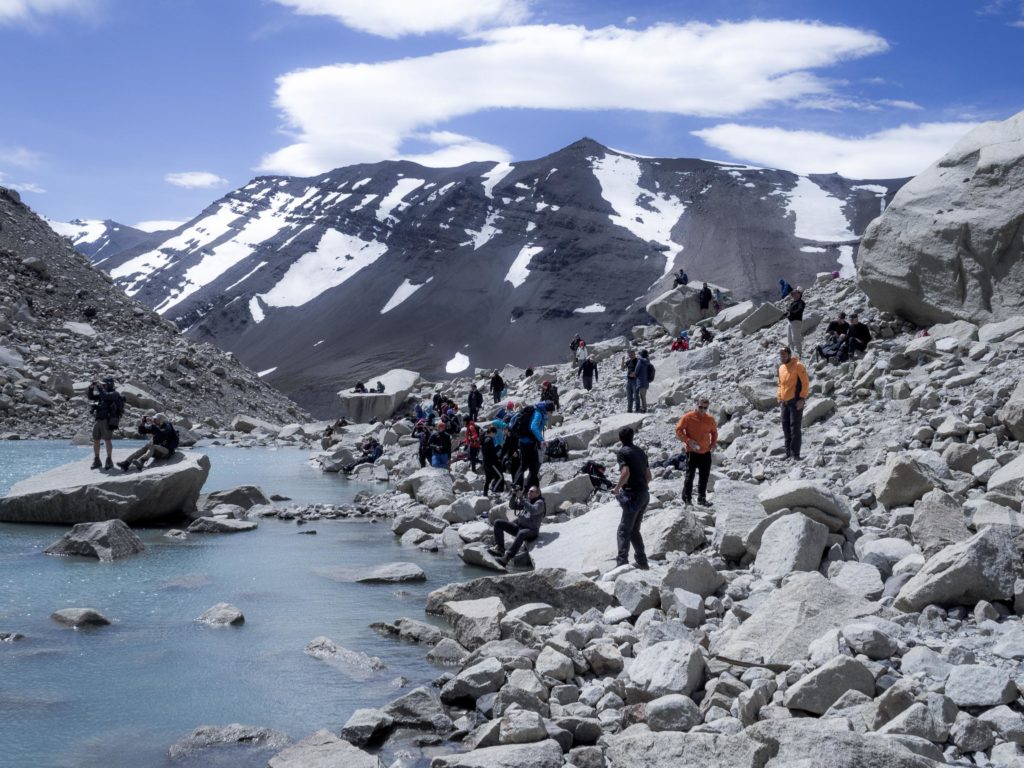7 things I wish I’d known before hiking the W-Trek
The W-Trek, with its well-known “three towers”, is the most famous trekking route in the Torres del Paine national park. We did the tour for 6 nights, starting on 30th November, which is right at the beginning of high season (Dec-Jan). The trek is truly overwhelming and worth doing when you get the chance to. But there are a couple of things to consider and prepare for.1) It is expensive
You probably have read and heard that before, and we can tell you: it’s true! However if you plan well in advance and bring your own gear and food it can be done on a tight budget too. Here are some costs (per person) as reference (Dec 2017):
- Bus (2 hours) from Puerto Natales to Torres del Paine park: 20 EUR (incl. return)
- Torres del Paine park entry: 27 EUR
- 1 night campsite (bring your own gear and food): 8-20 EUR depending on the campsite operator (there is one free one left)
- 1 night campsite (rent the gear at the site, tent is already pitched, incl. 3 meals): 90-150 EUR
- 1 night Refugio (full accommodation, incl. 3 meals): 150 EUR+
- 1 day renting camping gear (tent, sleeping bag + mat, cooking set) in Puerto Natales: 12 EUR
We stayed 6 nights on campsites, brought our own food and rented the camping gear in Puerto Natales. In total we spend 40 EUR / day and person, of which 12 EUR were daily spent on the camping gear rental (per person). The rest accounts for the entrance, bus, food, camp site…
Some campsites or Refugios offer a tiny mini market with a small selection of sweets, pasta & sauces, instant meals and drinks. But these are really expensive too. We did the food shopping in a supermarket in Puerto Natales and ended up with only 3 EUR / person for breakfast (coffee & cereal), lunch (bread, avocado, cheese, cucumber), snacks (chocolate, cereal bars, cookies) and dinner (pasta and rice with various sauces).
Food shopping hack for camping: spaghetti need the least space for packing compared to other pasta types and any kind of powdered liquids (pasta sauces, milk etc) limit the weight.
2) Camping gear: bring your own or rent?
This decision is of course one to make well in advance of your trip. Both options, bringing your own camping gear vs renting one in eg Puerto Natales, obviously have their pro and cons. Therefore we cannot give a definite recommendation.
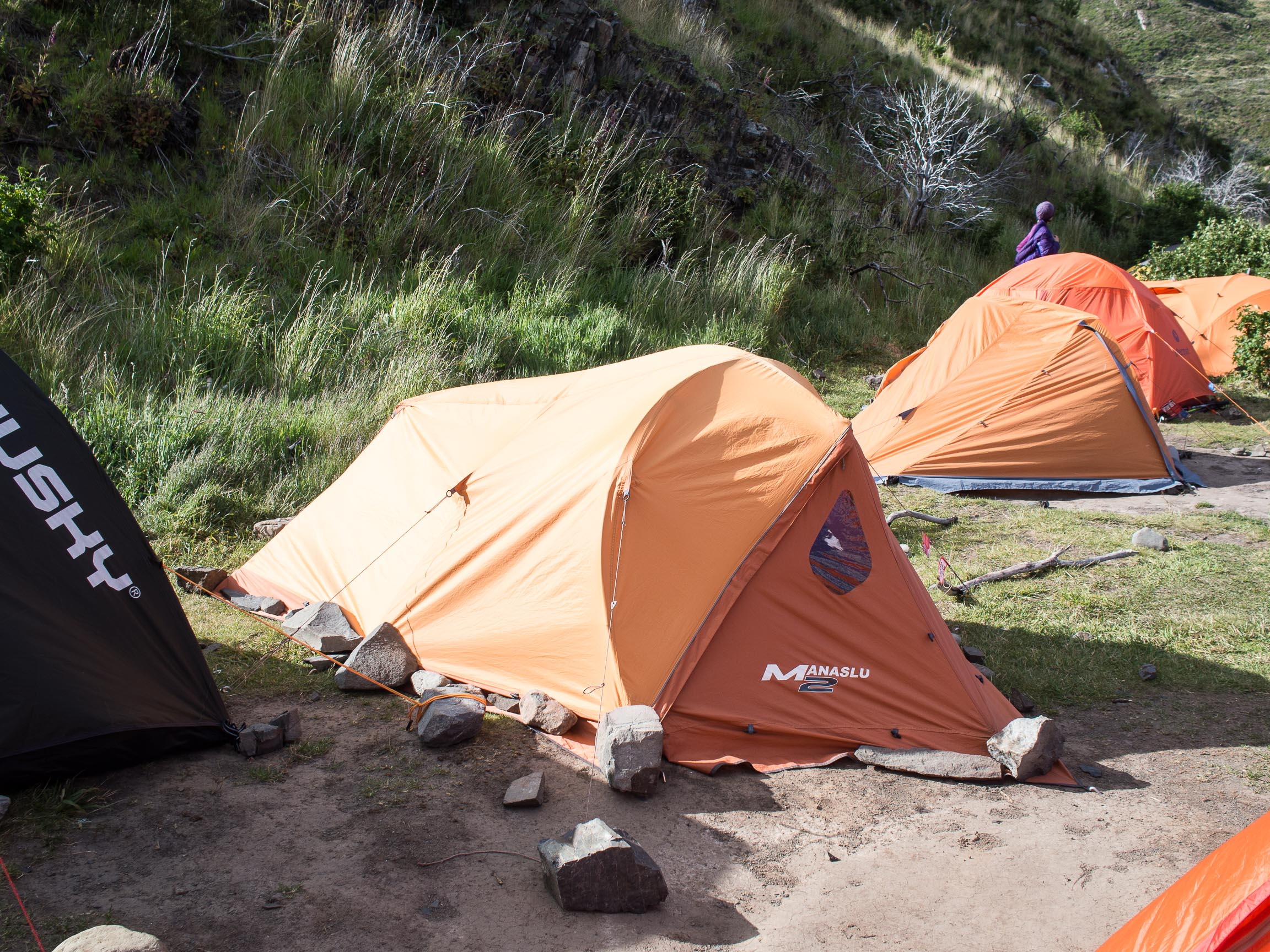
We rented the gear in Puerto Natales, which was (even at the beginning of high season) not that easy. The first rental place ran out of tents and advised us to go to another place and get everything from there, as it is much easier if you can pick up and return all the stuff at one place. You surely don’t want to rush all over the town after your hiking trip to give back single items, minding different opening hours of the rental services. Besides you’d end up paying more deposit. Unfortunately the second place was more expensive and ran out of our preferred type of sleeping bags. So when you want to rent you need to arrange yourself with whatever equipment is there, which was a tough learning for us as we had restricted space in our backpacks and wanted to keep equipment weight down to a minimum.
After all it all worked out fine enough, but if we’d known the struggle before we probably would have brought our own equipment from home (or if we had more time did some research on second-hand shopping in Natales). Especially because we enjoyed the camping so much and we for sure want to do some more during our trip through Patagonia 🙂
3) Preparation is the key
Preparation for the W-Trek can be a pain in the ass, but it pays off! I recommend planning and preparing in two phases:
Make campsite reservations: we made our reservations about 5 months in advance and found even back then some campsites already booked out. The booking is tricky enough and requires a separate blog post at a later stage. However, the reservations are required when entering the park and it’s worth the effort to also plan your hiking route in advance. Basically there a three different camp operators in the park:
- (1) Fantastico Sur: booking and paying online is rather simple
- (2) Vertice: booking online or reaching anyone via e-mail is a nightmare. We ended up with sending off a booking request via the homepage, which was unnecessary after all. We just booked and paid directly at the camp, which was lucky because the campsite is pretty much booked out during high season
- (3) Conaf: is the ministry of agriculture and runs the park. Their camp (there is only one left for hikers, others are for climbers only) can be booked online and is for free.
Camping outside of the campsites is strictly forbidden in the park. You should be able to get in the park even without any reservations, BUT then you need to prepared to pay the highest fares and take the “fullboard” packages, including mandatory tent rental and served meals (~155 EUR per person and night), regardless of whatever equipment and food you’d brought.
Do the packing: Once you are in Puerto Natales take at least one full day for final preps, like food shopping, gear renting or buying, detail route planning, packing. Take into consideration that shops in Puerto Natales open at 10:00 and close between 12/12:30 and 15:00 and the last bus to the park leaves at 14:30 (in high season only) and takes min 2 hours to the closest park entrance (be aware there are different entrances and options of entering the park, read more here).
4) The treks can get crowded
This should not be too much of a surprise due to the hype around the W-Trek. So be prepared to meet a lot of fellow hikers, sometimes in large guided groups. It gets especially crazy at the three towers, but along the trekking routes you will still find peace and calmness. Don’t let this put you off hiking the W-Trek. It is simply too beautiful to be left out.
5) There are pumas in the park
It was just “wow” to see a wildlife puma (in a safe distance) wandering along the beautiful landscape, but I wished I’d known of their existence in the park before. After some research I found out that their usual hunting time is during the night and when hiking in companionship, not threatening the puma or running away from it, you are supposed to be save. (Easy for me to say that now thoug^^)
6) Bring sunscreen and mosquito protection
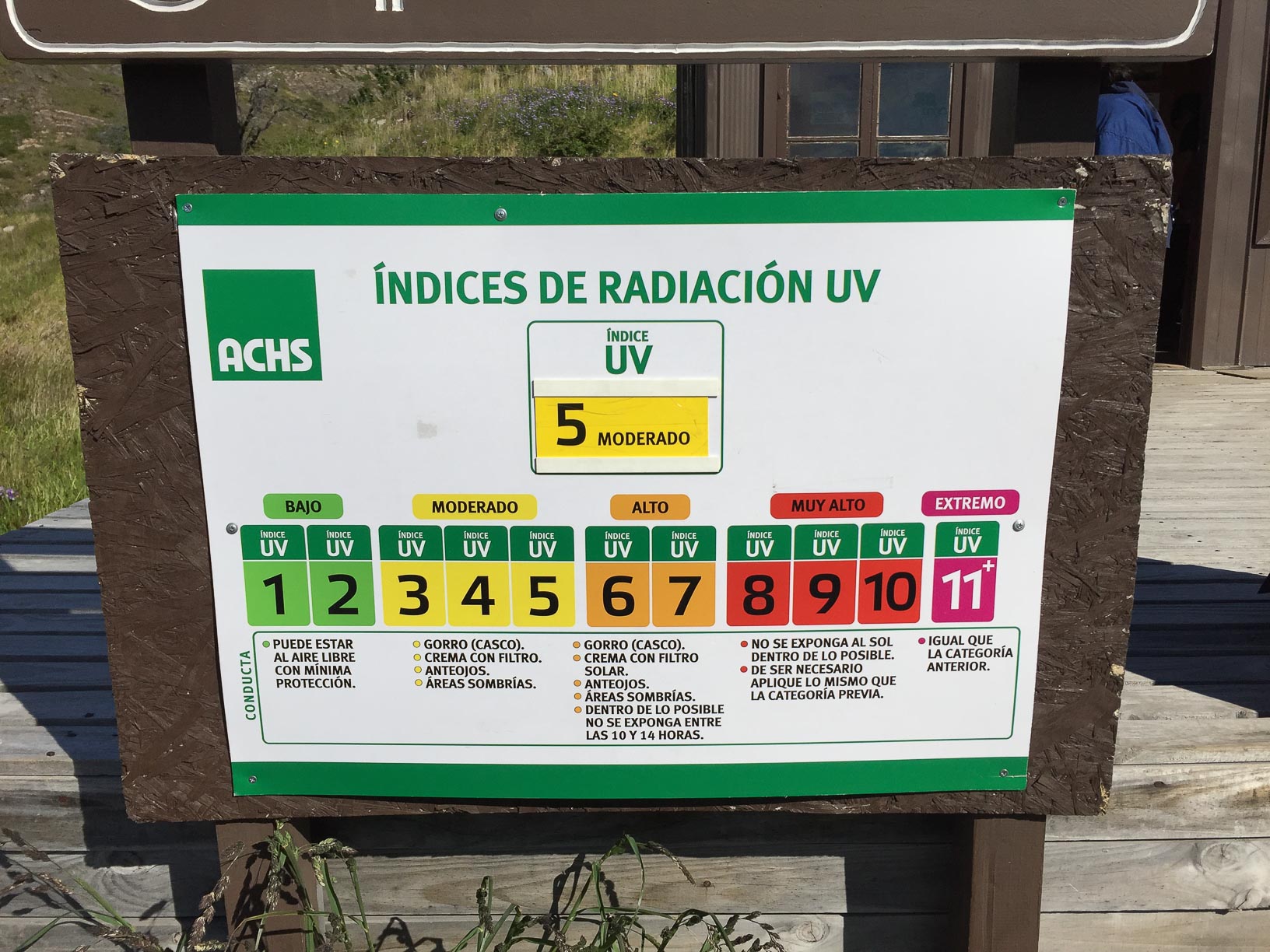
The UV radiation can get extremely high in Patagonia due to the harmed ozone in this reach of latitude. As the weather forecasts cannot always be trusted 100%, bring sunscreen (we got a good taint despite factor 50+). We had only one day with UV warning at 5, all others were 9+. I’d also recommend mosquito protection. I didn’t realise what kind of mosquito bite me several times, but I did regret not bringing any body or cloth spray for protection.
7) Don’t always trust the signs in the park
It was especially on our third day when we had to learn the hard way, that the indicated distances and hiking times did not match reality (read more here). It is mainly the Camp Frances that is 2km farther (including some steep parts uphill) than indicated on the maps in the park. Also on our way out from Camp Paine Grande to the Administration office you should add another 2 km (which can be important for catching the bus back to Puerto Natales in time).
Find in the following map our routes as recorded on Georg’s GPS watch for a better understanding. The respective distances and hiking durations per day are listed in this post.
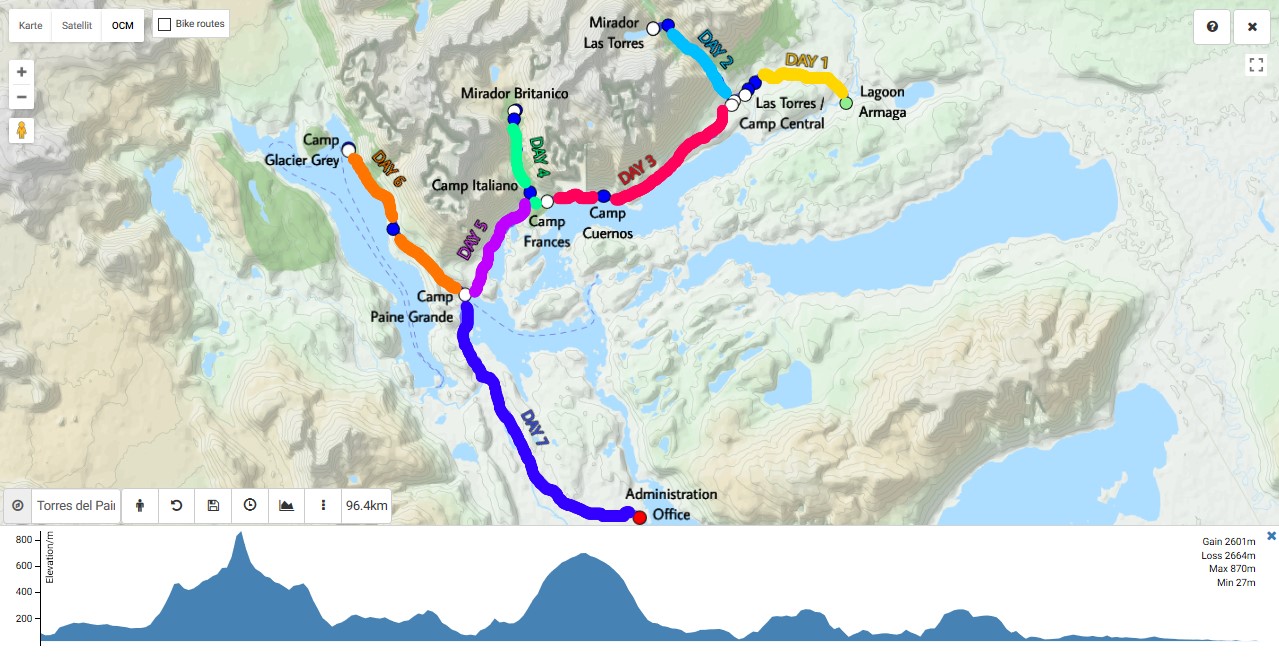
Don’t let you put off of doing the W-Trek (or O-Circuit) after reading this or similar stories on other blogs. The national park and its landscapes are definitely worth it! This post shall just provide some background information for (mental) preparation and expectation management!

